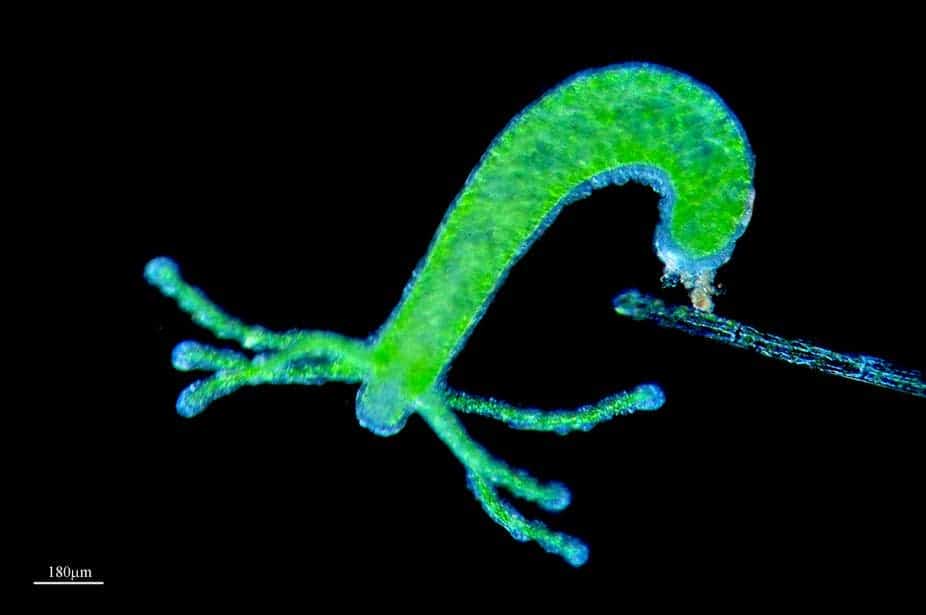
Hydras, tiny aquatic animals, are some of the most intriguing creatures in the animal kingdom. For one, they’re virtually immortal. Because their stem cells have the capacity for unlimited self-renewal, unless the hydra is eaten or physically destroyed by an external force, it could theoretically live forever. It does know death from old age.
Even when its head is severed, the hydra will grow one back — its will to live is truly unmatched. Now, researchers in California have found their secret, and it’s all in their genes. Or rather, in how they’re regulated, known as ‘epigenetics’.
Hydras, which are related to corals, sea wasps, and jellyfish, are asexual, meaning they can reproduce on their own without the need for a mate. Instead, they reproduce by growing buds on the surface of their bodies, miniature clones of the original individuals that simply break away once they are mature. Research has found that animals that reproduce later on and less frequently tend to live longer. Hydras, however, begin to reproduce almost immediately after they form.
In 2012, researchers at the Zoological Institute of Kiel University found that the key to the hydra’s longevity is the FoxO gene, which was previously linked with aging in humans. The researchers found that FoxO plays a fundamental role in the maintenance of stem cells
The hydra is basically a bag of stem cells. In fact, it is an adult that continues to churn out embryonic cells, which sort of makes it a perennial embryo. Because the genes that regulate development are constantly switched on, they are constantly rejuvenating the body.
Researchers at the University of California Irvine thought the same mechanisms found in reproduction may also explain the death-defying act of head regeneration. But, as they reported in the journal Genome Biology and Evolution, the two processes are distinct.
“One exciting finding of this work is that the head regeneration and budding programs in Hydra are quite different,” said the paper’s lead author, Aide Macias-Muñoz.
“Even though the result is the same (a hydra head), gene expression is much more variable during regeneration. Accompanying dynamic gene expression is dynamic chromatin remodeling at sites where developmental transcription factors bind,” the scientist added.

The biologists mapped more than 27,000 elements that are active in one or more segments of the hydra’s body or regenerating tissue. They used a method called ChIP-seq that analyzes how proteins interact with DNA, so they could see which sections of the genomes are turned on or off during a particular stage of development, such as head regeneration. They found 2,870 regions of the hydro genome that drive head regeneration but are not all necessarily active during budding, including “enhancer” genes, genomic sequences that play a key role in regulating tissue-specific gene expression levels.
According to Science Alert, the researchers identified a family of genes known as Fos that was very active in head regeneration. The same genes were previously associated with regenerative processes in other species, such as fish, salamanders, and mice.
Many of the hydra’s genes involved in regenerating its severed head are also present in humans. It’s just that ours are switched off, while theirs are switched on by environmental cues — that’s the essence and power of epigenetics. If humans had access to the same genetic programming, could this be a fountain of youth? That’s one rabbit hole the researchers haven’t dared enter. But by detangling these mechanisms, researchers may further elucidate other key aspects of animal evolution and development, such as that of the nervous system, the authors noted in their study.



